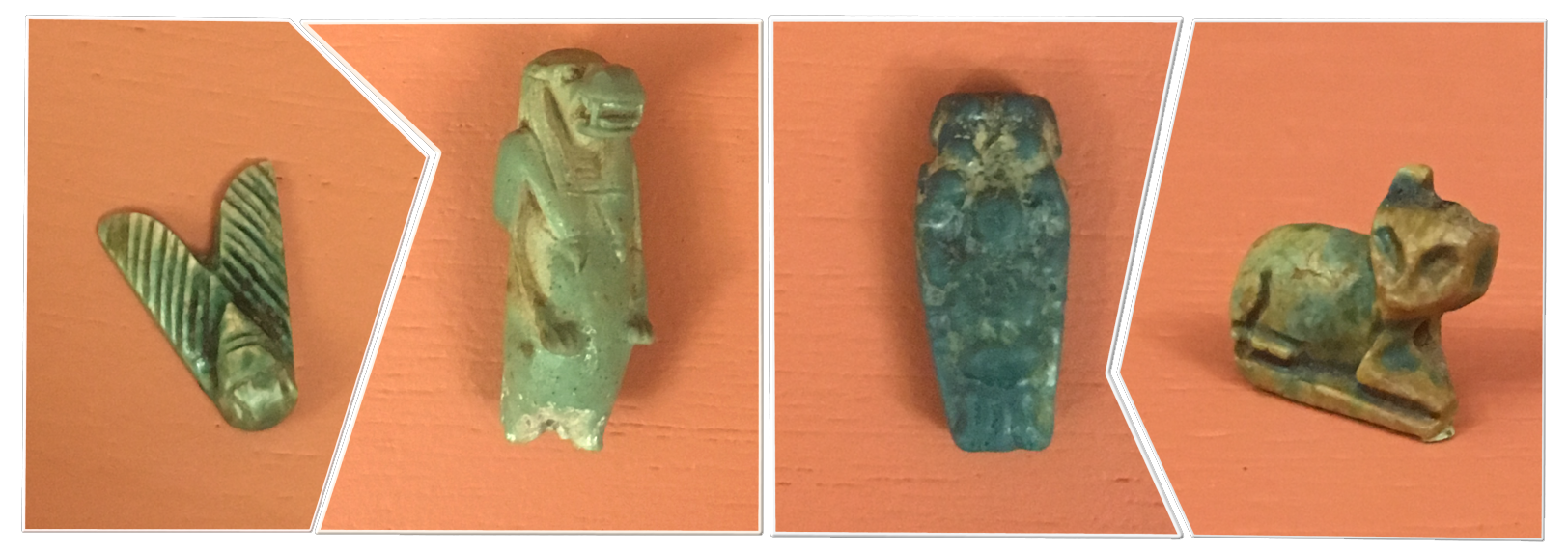Amulets: Scarabs, Winged Scarab, Rectangular Plaque, Cat, Fly, Hippo, and Goddess Bes
Carnelian, faience, stone, and pottery
Egyptian, ranging from 1786 BC-30 BC
 Amulets are an important part of ancient Egyptian culture. The origin of the word is uncertain but some scholars are of the opinion that the word has Arabic roots and means to bear or carry. More commonly, scholars believe the word comes from the Latin word amuletum meaning to avert evil or protect from a spell.
Amulets are an important part of ancient Egyptian culture. The origin of the word is uncertain but some scholars are of the opinion that the word has Arabic roots and means to bear or carry. More commonly, scholars believe the word comes from the Latin word amuletum meaning to avert evil or protect from a spell.
The ancient Egyptians believed that amulets possessed magical powers, which were determined by the amulet’s shape, color, and material. The amulet’s “powers” could be activated by reciting a spell or rubbing the amulet. Amulets were worn by both the rich and poor and might be made of precious stones and metals or cheaper materials such as faience, a ceramic made from quartz. The picture on the right provides a sampling of Egyptian amulets from M&G’s Bowen Collection of Antiquities. From left to right: fly, Hippo, Bes, and Cat.
During the Old Kingdom (2686 BC-2134 BC) these good luck charms consisted mainly of animal forms or symbols derived from hieroglyphs. However, progressing through the Middle Kingdom (2050 BC-1652 BC), amulets began to take on the form of ancient Egyptian gods. Finally, during the New Kingdom (1550-712 BC), amulets appeared in a variety of forms.
These special ornaments were used for two main purposes—in daily life and funeral preparation. In daily life, an Egyptian would wear or carry and amulet for protection or good luck. In funerary ritual, the mummies were often buried with multiple charms to ensure protection in the after-life. The amulets might be part of necklaces and bracelets or interspersed in the layers of linen wrapping the mummified body.
The scarab was the most popular amulet in ancient Egypt; it was formed in the shape of a beetle and became a good luck charm, believed to bring prosperity and eternal life. The Egyptians viewed the beetle as a divine manifestation of the sun-god Ra; just as the beetles rolled balls of dung across the ground, so Ra controlled the movement of the sun in the sky. The heart scarab was placed on the chest of a deceased person. It was believed to help the person “pass the feather of truth test.” This test would allow the individual to pass on into the after-life. The heart scarab had a spell inscribed on the back that can be found in the Book of the Dead. 
Carissa Wells, Elementary Education Coordinator
Published in 2018